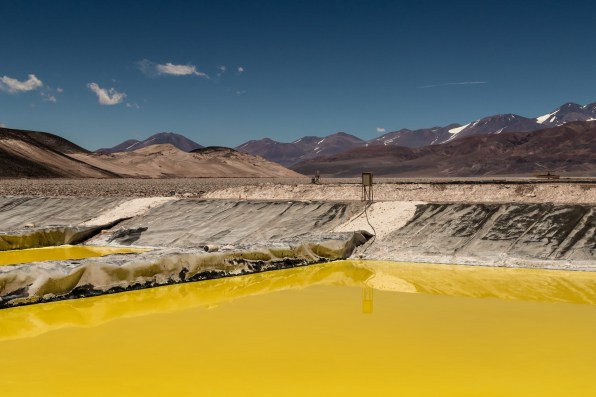- | 9:00 am
Eco-friendly tech isn’t enough for the environment. We need to cut energy demand, too
Wind turbines and EVs have their own environmental trade-offs, like the damage of mining for materials—requiring a closer look at how we deploy such tech around the world.

If we want to keep global temperature rise below 1.5 or even 2 degrees Celsius, we’ll need a monumental shift in how our energy and transport systems work. The International Energy Agency has declared that millions of solar panels, wind turbines, and electric vehicles (EVs) will need to be made and deployed around the world in the next three decades. Thankfully, these technologies are constantly improving—as well as becoming cheaper.
However, a key feature of most eco-friendly tech is that it requires more, and more varied, materials than those used in the tech it’s replacing. Wind turbines need iron and zinc for the corrosion-proof steel and motors needed to capture energy from the wind. And EVs need lithium, cobalt, nickel, and manganese for their batteries, plus neodymium and other rare earth materials for their motors.
Building lots of these devices will therefore require huge amounts of specific materials, many of which are difficult to mine. Some can come from recycling, but for many materials, such as lithium, there’s just not enough being used today that can be recycled for future use. Instead, most will have to come from mining.
This means that if low-carbon tech is to be used around the world, we need to face the less palatable consequences, or trade-offs, of building it. Making a global switch to EVs, for example, may mean damaging forest ecosystems to access lithium or cobalt.
TRADE-OFFS
One major trade-off is the environmental damage associated with mining and refining materials. An example is aluminum, vital for making solar panel frames. Worldwide aluminum production accounts for 2% of all greenhouse gas emissions, with studies estimating future emissions could reach 1.7 gigatonnes of CO₂ by 2050—equivalent to twice the annual emissions from planes.
There’s potential to cut these emissions significantly, however. Switching the source of electricity for processing aluminum from fossil fuels to hydroelectric can reduce emissions from new aluminum by around 75%. What’s needed to make that happen, though, are better financial incentives for the mining sector to use renewable energy.
Difficulties with sourcing these materials are not limited to the emissions they create. Extracting lithium from brine—as is done in Argentina, Bolivia, and Chile—requires drilling holes in salt flats to bring brine (saltwater) to the surface, then evaporating the water using sunlight to leave potassium, manganese, borax, and lithium salts behind.

There is a debate about the extent to which this brine qualifies as water, and therefore how much its extraction is affecting water-stressed regions like Chile. For those arguing that it should be classed as water, its extraction is creating unnecessary water scarcity and damaging fragile ecosystems. And even from the perspective of those arguing it’s not water due to its high concentration of minerals, the long-term consequences of its extraction remain unknown.Cobalt, another vital material used in EV batteries, is mostly mined in the Democratic Republic of Congo. A large but unknown quantity of cobalt is extracted by small-scale miners who often employ children and have been accused of unsafe working conditions, poor safety records, and exploitative employment contracts.
These trade-offs are not a justification for avoiding action on climate change, or for refusing to build the tech we need to decarbonize essential systems. They do, however, justify closer focus on how the materials needed to make eco-friendlier tech are sourced.
Improving recycling of old products and scrap materials is a crucial part of this. However, the sheer increase in demand for these materials, due to the ongoing low-carbon transition as well as consumers’ growing wealth across the world, means this alone probably won’t be enough to avoid widespread ecosystem damage.
To help reduce this demand, we must increase the energy efficiency of our homes and businesses so they require less energy in the first place. Shifting away from private transport by investing in public transport will also help to cut mining demand. Without such action, achieving a truly sustainable low-carbon transition will be impossible.
Read more related impact news articles in our impact section here.
This article is republished from The Conversation under a Creative Commons license. Read the original article.


































